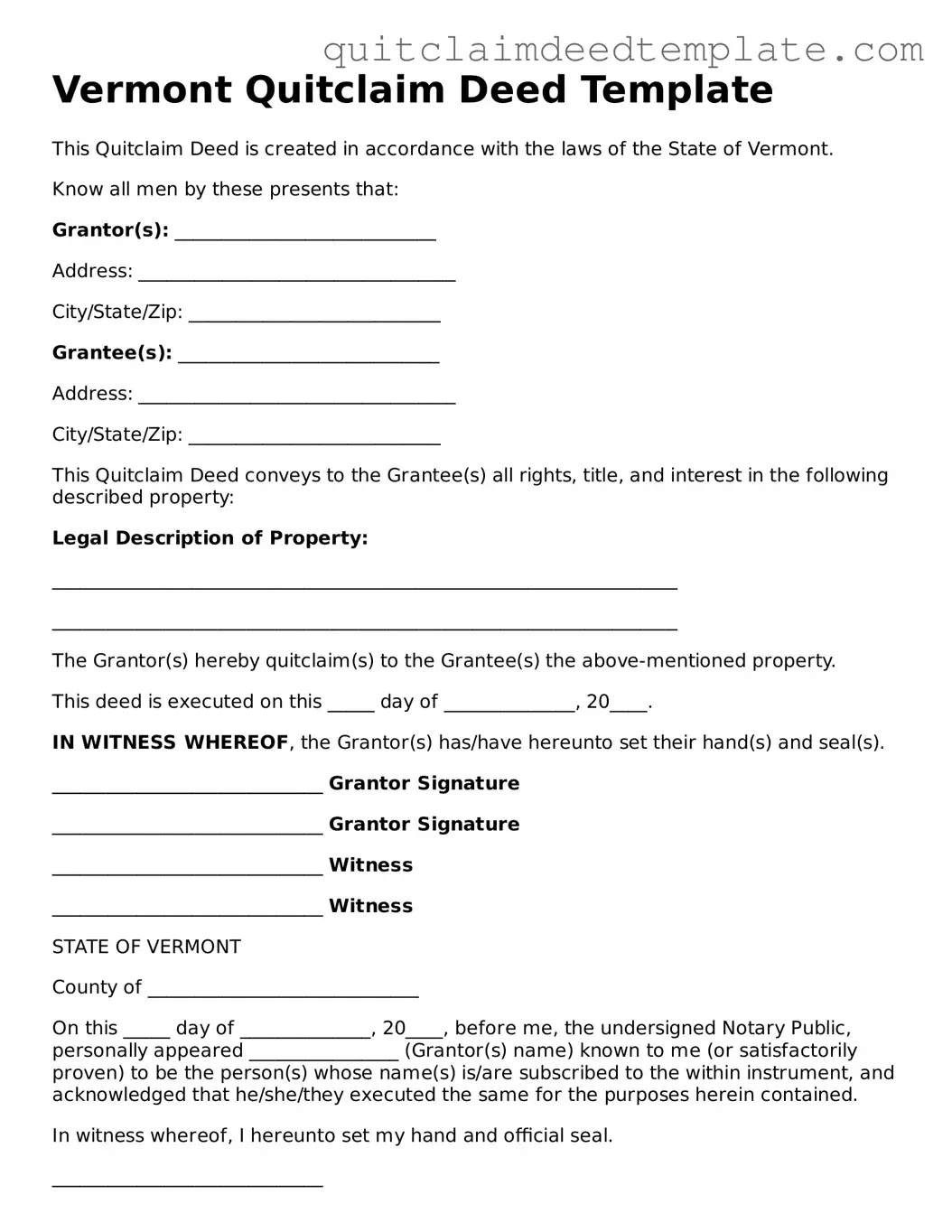Documents used along the form
When transferring property ownership in Vermont, a Quitclaim Deed is often accompanied by several other important documents. Each of these documents serves a specific purpose in ensuring a smooth and legally sound transaction. Here’s a list of forms and documents commonly used alongside the Vermont Quitclaim Deed.
- Property Transfer Tax Return: This form is required to report the transfer of property and calculate any applicable taxes.
- Title Search Report: A title search report provides a history of the property’s ownership, ensuring there are no outstanding liens or claims.
- Affidavit of Title: This document is a sworn statement by the seller affirming they hold clear title to the property being transferred.
- Real Estate Purchase Agreement: This contract outlines the terms of the sale, including the purchase price and contingencies, and is signed by both buyer and seller.
- Warranty Deed: Unlike a Quitclaim Deed, a Warranty Deed guarantees that the seller holds clear title and has the right to sell the property.
- Power of Attorney: If someone is acting on behalf of the seller, a Power of Attorney grants them the authority to sign documents related to the property transfer.
- Notice of Transfer: This document notifies local authorities of the property transfer, which may be required for tax purposes.
- Settlement Statement: Also known as a HUD-1, this document summarizes the financial details of the transaction, including costs and fees.
- Homeowner’s Association (HOA) Documents: If the property is part of an HOA, these documents outline the rules, regulations, and fees associated with the community.
- Deed of Trust: This document secures a loan by placing a lien on the property, often used when financing the purchase.
Understanding these documents can help streamline the property transfer process and protect your interests. Always consider consulting with a professional to ensure all necessary forms are completed accurately and submitted on time.
